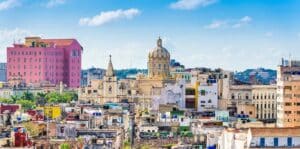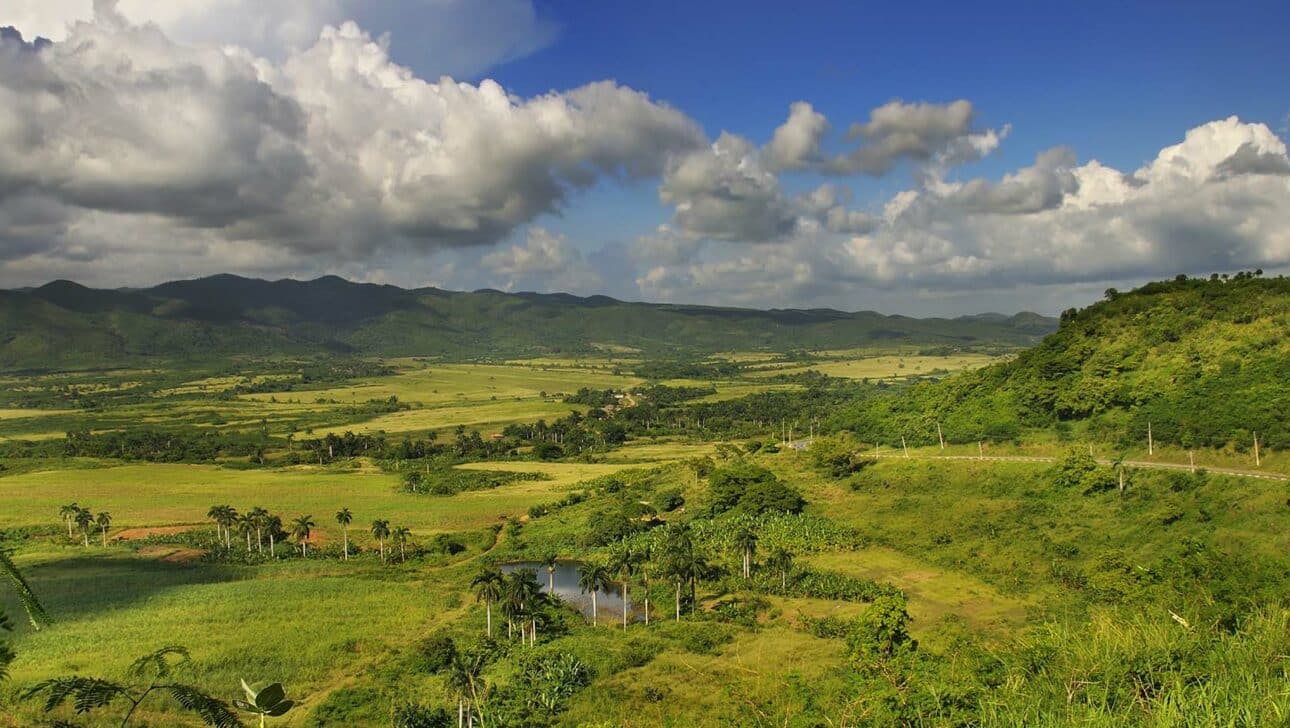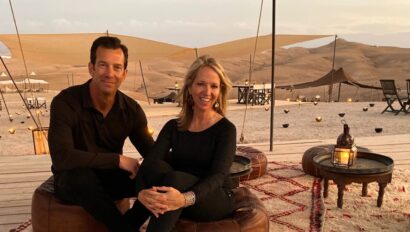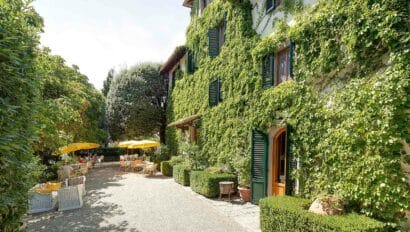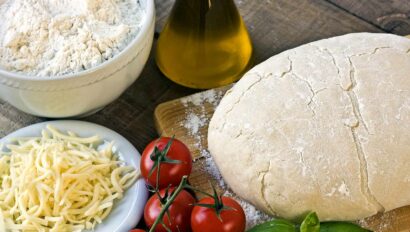Cuba vacation lesson #1: Royal palms grow wild in the countryside. You know the trees I’m talking about. Their slender 60-foot trunks arc up to feathery umbrellas of fronds, like the ones that line iconic streets in Beverly Hills and Vegas. That’s the first thing that strikes me as we drive out of Havana toward the Viñales Valley, 120 miles to the west. I noticed them first only because the palms are the tallest features in the landscape. Up close, rural Cuba would take me by surprise again and again.
For starters, a couple of minutes outside the city limits, farm animals — a bull, horses, an occasional donkey — are tethered for grazing just a few feet from the road. Motor vehicles are sparse. Once in a while, a rattletrap ’59 Chevy blows past. Horse carts bounce along the shoulder, stacked with hay or packed tight with field hands. At random intervals, people cluster roadside, often waiting hours for a notoriously unreliable bus. The school kids we meet don’t even need a bus. They all walk to their adobe classrooms, where chickens scratch and cackle just outside the front door.
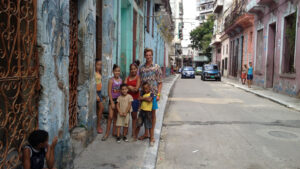
You might think all of that would change in the Viñales Valley. It is, after all, a national park and a UNESCO World Heritage Site. Cubans who can afford a vacation go west to the scenic Viñales Valley. See why it’s our favorite place, too. From our hotel on one rim of the valley, the view stretches for miles. Bright patches of rust-red soil interrupt emerald fields dotted with palms. Over it all stand the stars of this show, the massive round-topped towers of granite known as mogotes.
But this is a working valley, and in the company of our local friend Oscar, we followed the lanes that the farmers use. Their small farmhouses are almost all identical, open front-to-back in “shotgun” style for ventilation. In small gardens, goats bleat at us. We yield right-of-way to the garlic vendor who pedals house-to-house on a bicycle draped with three-foot-long strings of bulbs. At the foot of sacred kapok trees, little Santeria offerings of fruit lie hidden in the grass. Beside them grow tourist trees that supposedly earned their name because their bright red bark is the color of a sunburned visitor’s skin. Funny — because tourists don’t grow on trees around here.
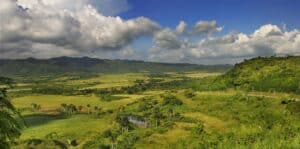
Tobacco is the valley’s main cash crop. Stepping into a waist-high row of plants, Oscar shows us how different leaves have unique functions in cigar making. Later, he wheedles us an invitation into one of the drying barns. Under a thick canopy of drying leaves, the sixth-generation owner explains that he is required to sell 90 percent of his crop to the government. But the remaining tenth is where his passion lies. He drizzles dried leaves with his own secret “juice” mixed from tea, honey and rum for making his own cigars. On a board laid across his lap, he rolls his fermented leaves into a lean cylinder and lights one up for anyone who wants a puff. More to my taste is a piña colada made from the family’s homegrown pineapple. The farmer hospitably sets out a fresh bottle of Guayabita del Pinar, the local liquor flavored with guava. It is a generous pour-your-own policy (with an open invitation to go back for more when you can see the bottom of your glass).
As the day slides toward sunset, an old man, comfortably astride his donkey, trots to a halt just long enough to ask where I’m from, tell me about his time in Fidel’s army in Angola and how he just received his nearby house as a reward for his service. Machete in hand, another farmer hacks his way through a field of taro. High above one of those mogotes, a hawk catches a thermal. As it drifts over us, I imagine how little the picture from up there has changed. But I also see how this time in the countryside has broadened my view of what a Cuba vacation looks like.
